|
|
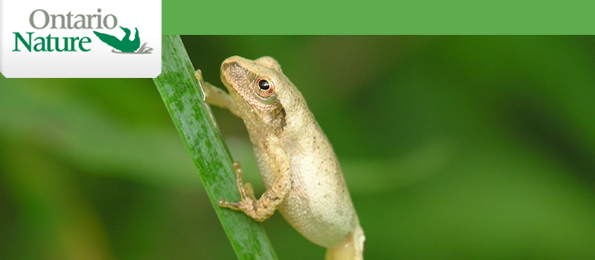 Can you name me? Can you name me? |
Dear  , ,
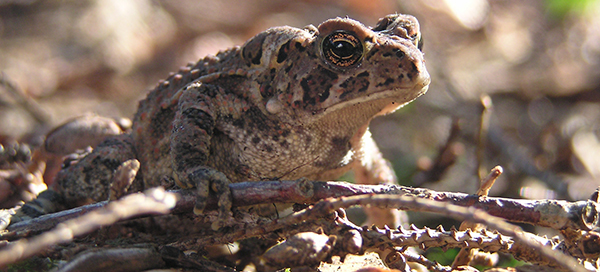
Species ID challenge
Were you able to identify the species in our last newsletter? The correct answer is the eggs of the American Toad. This medium to large toad has brown, reddish, or olive skin with dark blotches on the back containing one to two spots of various colours. Contrary to popular belief, people cannot get warts from touching toads! The species often has a light line down the middle of its back and its white belly has greyish-black spots. As habitat generalists, American toads can be found in a wide range of terrestrial habitats, from mown grass and gardens to heavily forested areas. Though they face the same threats as other amphibians – habitat loss, road mortality and pollution – American toads tend to be more resilient than other species. However, the toad’s status has not yet been assessed in Ontario or Canada.
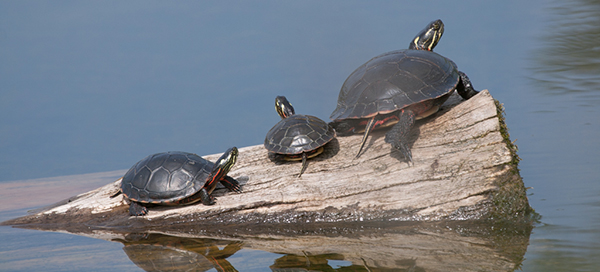
Upcoming Reptile and Amphibian Events
Western Chorus Frog monitoring program Blazing Star Environmental has partnered with the Canadian Wildlife Service and Trent University on a long-term, range-wide monitoring program for the western chorus frog. They are looking for dedicated volunteers to complete short daytime surveys starting as soon as western chorus frogs begin calling in early April. If you are interested in lending a hand, please email info@blazingstar.ca.
Spring Around the Corner Market Come visit Think Turtle Conservation Initiative at the Combermere Community Centre on March 21st and learn about helping turtles in preparation for turtle season! There’s plenty of other vendors to peruse including: arts, crafts, baked goods, local honey, maple syrup, pickled goods and much more. For more information, please email thinkturtle@yahoo.com.
Spring Toad Festival Celebrate the arrival of spring With Adopt-A-Pond on May 2nd by experiencing the sights and sounds of amorous male toads in search of that special someone! Although the emergence and courtship of toads is the main event, there are heaps of other fun activities for nature lovers of all ages. Please email aap@torontozoo.ca for more information.
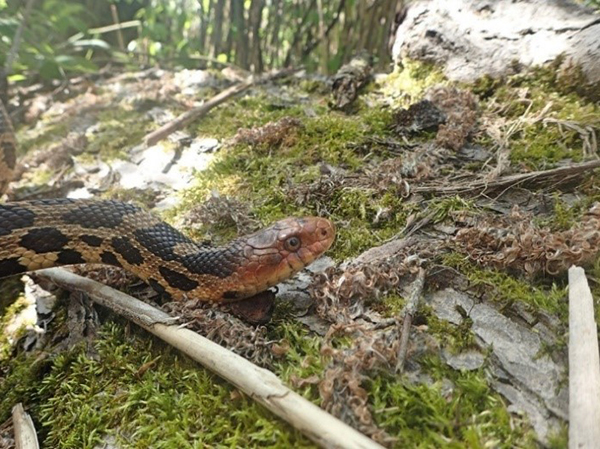
Research Highlight: Snake Fungal Disease
Our research project is one of the first to confirm snake fungal disease in southern Ontario. We tracked Eastern Foxsnakes for more than two years to study the seasonal dynamics and fitness impacts of Ophidiomycosis, a snake fungal disease that causes skin lesions and in severe cases, death. Although Eastern Foxsnakes are disproportionately affected by the disease compared to other Ontario snake species, I found that a snake with ophidiomycosis was not more likely to die than an otherwise healthy snake. Some diseased females even went on to lay eggs. Disease can needlessly stress wildlife populations, but snakes have proven their resiliency again, and I am hopeful eastern foxsnakes will inhabit Ontario for a long time yet.
Written by Rachel Dillon: M.Sc., Trent University
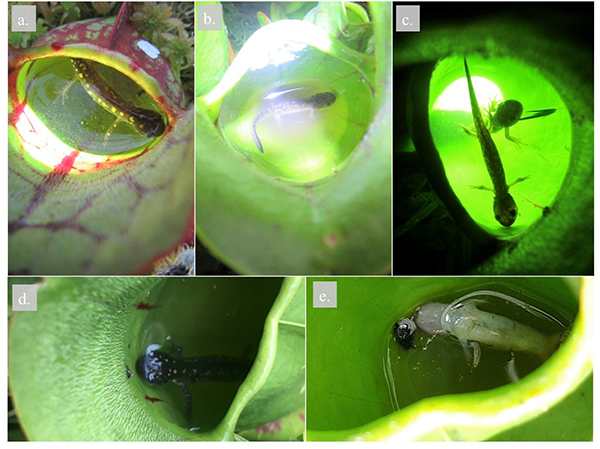
Research Highlight: Pitcher Plants and Salamanders
Student biologists at Algonquin Wildlife Research Station in Algonquin Provincial Park have discovered that Ontario’s northern pitcher plants will prey on salamanders. Botanical carnivory is an evolutionary marvel of the plant kingdom that has long fascinated naturalists and nature lovers. Carnivorous plants grow in nutrient-poor conditions that require them to capture animal prey, mainly invertebrates. The researchers at Algonquin Wildlife Research Station found that an estimated 4-5% of metamorphic spotted salamanders dispersing from pond to forest were falling prey to carnivorous plants. In fact, salamanders were found in nearly 20% (1 in 5) of surveyed plants! What makes this report so surprising is the frequency with which the plants are catching and consuming vertebrate prey. The high frequency of salamander captures suggests that pitcher plants are a major source of mortality for salamanders and that salamanders are an appreciable source of seasonal nutrition for pitcher plants at this study site. Check out a clip of this interesting phenomenon here! Read the full research paper. Written by Patrick Moldowan.
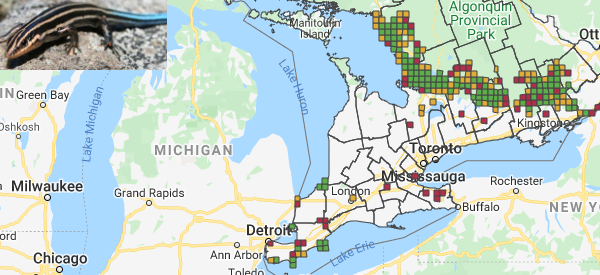
Atlas Transition Reminder
As herps across Ontario are transitioning from winter hibernation to the awakening of spring, the Ontario Reptile and Amphibian Atlas (ORAA) is also transitioning from data collection to data analysis. While observations are no longer being accepted, we have our exciting publication to look forward to! This publication will highlight the key findings from the ORAA over its 10-year lifespan. We want to thank all of you for your support and enthusiasm over the years and we look forward to sharing the results of your hard work later this year!
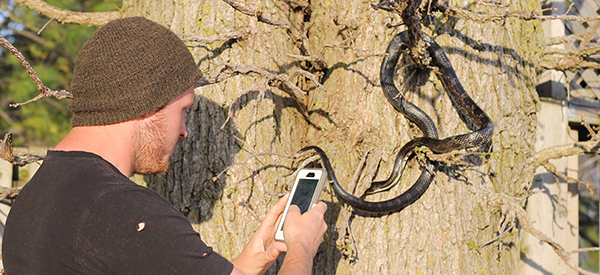
Atlas Data Submissions
The Ontario Reptile and Amphibian Atlas may have stopped accepting observations, but that doesn’t mean you can’t continue to observe and submit sightings of reptiles and amphibians! We strongly encourage you to continue submitting observations through citizen science projects, such as the ‘Herps of Ontario’ project on iNaturalist, where your observations will be vetted by researchers, experts and other citizen scientists. You can also submit observations of species at risk to the ‘NHIC’ project on iNaturalist or compile records in a spreadsheet and email it to the Natural Heritage Information Centre (nhicrequests@ontario.ca). We owe the success of the ORAA to you and hope atlas users will continue contributing valuable herp data through other sources and spread your enthusiasm for herp conservation in Ontario. Keep up the good herp work!
|
|
|
|
|
214 King Street West, Suite 612
Toronto, Ontario M5H 3S6
|
| Privacy Policy | Unsubscribe | Contact Us | ontarionature.org |
Charitable registration# 10737 8952 RR0001
Photo © Peter Ferguson, Nigel Parr CC BY-NC 2.0, Rachel Dillon, Moldowan et al. 2019, Toronto Entomological Association, Jory Mullen |
|
|